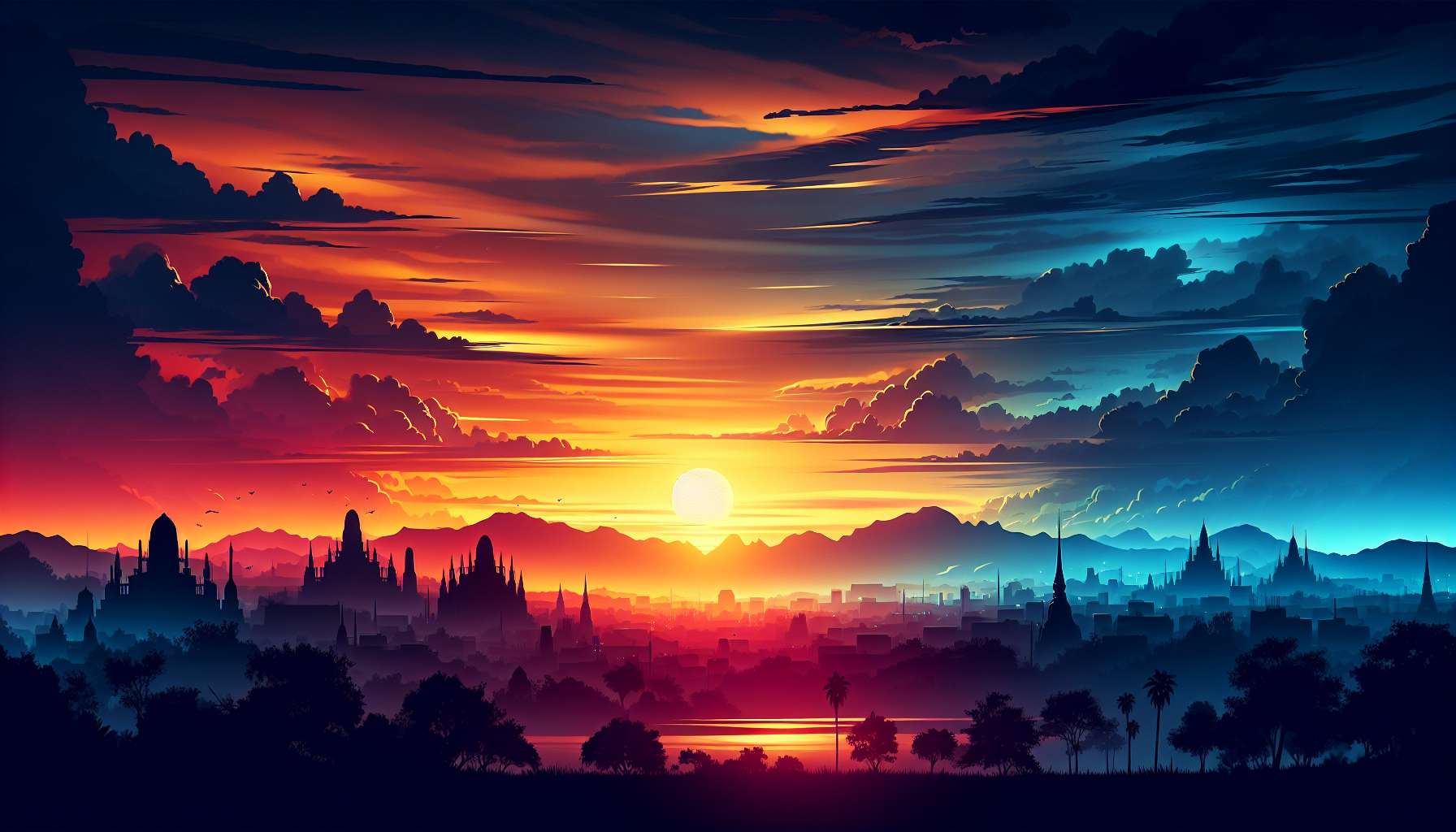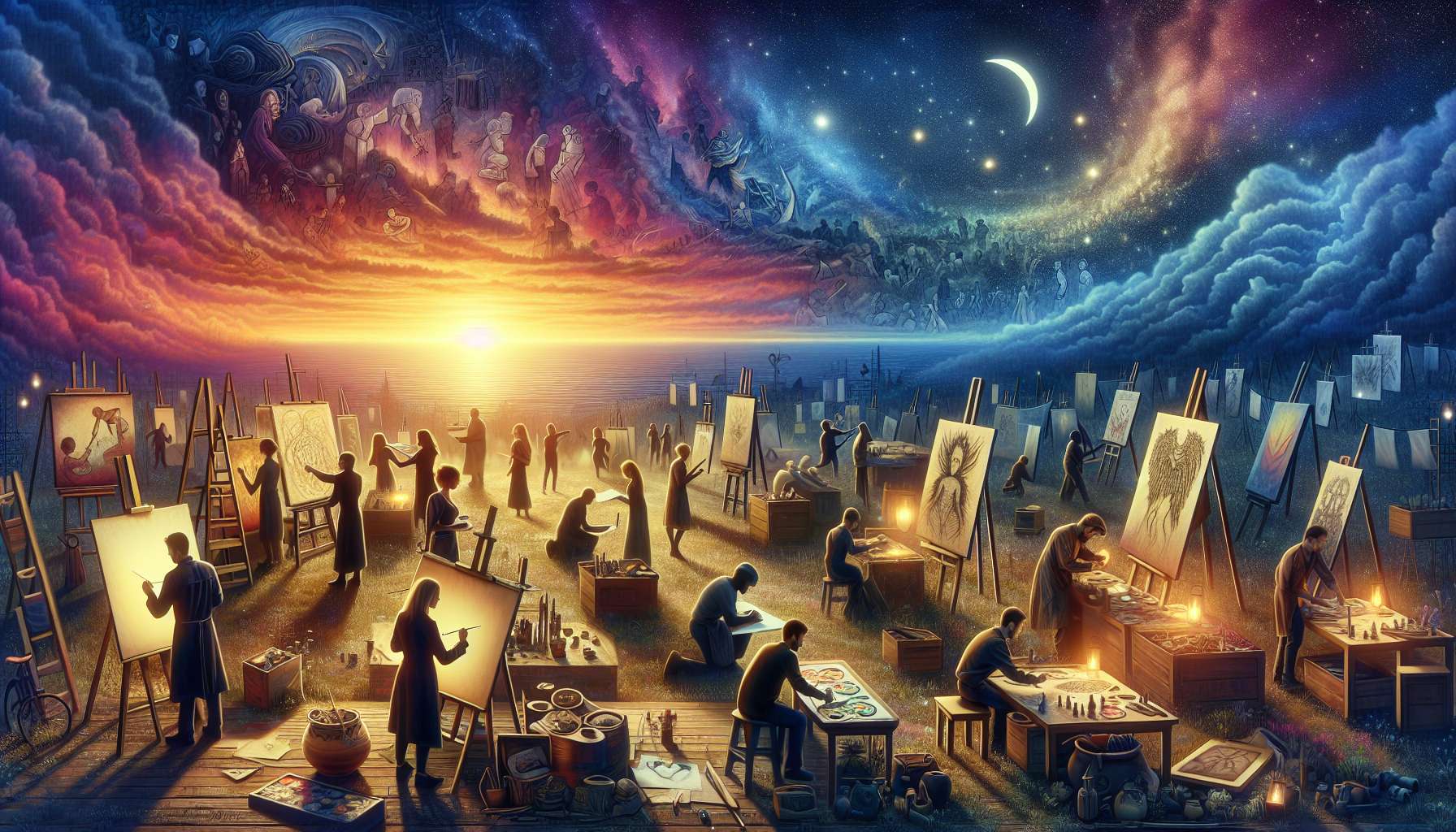Unlocking the Magic of Twilight Photography: A Comprehensive Guide
Welcome to the mesmerizing world of twilight photography, where the beauty of dusk and dawn meets the art of capturing stunning images. As the sun dips below the horizon, the sky is painted with a myriad of colors, casting a magical glow that photographers around the world strive to capture. But what exactly is twilight photography, and why is it so captivating? In this in-depth guide, we will delve into the intricacies of twilight photography, exploring its techniques, challenges, and the mesmerizing results it can produce.
The Enchantment of Twilight
Twilight, that fleeting period of semi-darkness between day and night, has long been a source of fascination for photographers. The soft, diffused light during twilight creates a unique atmosphere that is both ethereal and enchanting. The sky is often adorned with hues of pink, orange, and purple, providing a stunning backdrop for any subject. Whether you’re capturing cityscapes, landscapes, or portraits, twilight offers a wealth of opportunities for creative expression.
But why is twilight photography so special? The answer lies in the quality of light during this time. Unlike the harsh, direct light of midday, twilight light is soft, warm, and flattering. It gently illuminates your subjects, creating a dreamy, magical effect that is hard to replicate at any other time of day. Additionally, the ever-changing colors of the sky during twilight add a dynamic element to your photos, making each shot truly unique.
The Golden Hour: Twilight’s Magic Hour
One of the most popular times for twilight photography is during what photographers often refer to as the “golden hour.” This refers to the period shortly after sunrise or before sunset when the sun is low on the horizon, casting a golden glow over everything it touches. The golden hour is a prime time for capturing breathtaking images with rich, warm tones and soft, directional light.
During the golden hour, the sky transitions through a range of colors, from soft pinks and oranges to deep blues and purples. This ever-changing canvas provides a wealth of creative opportunities for photographers, allowing them to experiment with different compositions and subjects. Whether you’re shooting landscapes, seascapes, or cityscapes, the golden hour offers a magical backdrop that can elevate your photos to a whole new level.
Mastering Twilight Photography Techniques
Successfully capturing the beauty of twilight requires a combination of technical skill, creativity, and patience. Here are some key techniques to keep in mind when embarking on your twilight photography journey:
1. Use a Tripod
As the light levels drop during twilight, it becomes increasingly challenging to handhold your camera steady. Using a tripod is essential to ensure sharp, clear images, especially when shooting at slower shutter speeds to capture the low light conditions. Invest in a sturdy tripod to provide stability and eliminate camera shake.
2. Adjust Your White Balance
During twilight, the color temperature of the light can change rapidly, leading to shifts in the color cast of your photos. Experiment with different white balance settings to achieve the desired look for your images. Consider using the “shade” or “cloudy” white balance presets to enhance the warm tones of twilight light.
3. Shoot in RAW
Shooting in RAW format gives you greater flexibility when editing your twilight photos. RAW files contain more data and allow for extensive adjustments to exposure, color, and contrast in post-processing. This is especially important when working with the subtle nuances of twilight light.
4. Experiment with Long Exposures
Long exposures can create stunning effects during twilight photography, such as smooth water surfaces, streaking clouds, or light trails from moving vehicles. Use a slow shutter speed and a neutral density filter to achieve these effects and add a sense of motion and drama to your images.
5. Embrace Silhouettes and Reflections
Twilight is the perfect time to experiment with silhouettes and reflections in your photos. Position your subjects against the colorful twilight sky to create striking silhouettes, or look for bodies of water to capture reflections of the sky and surrounding scenery. These techniques can add depth and visual interest to your twilight images.
6. Play with Composition and Framing
Composition is key to creating compelling twilight photos. Experiment with different angles, perspectives, and framing to enhance the mood and storytelling of your images. Incorporate leading lines, symmetry, and negative space to draw the viewer’s eye towards the focal point of your photo.
Capturing Urban Twilightscapes
Urban environments offer a wealth of opportunities for twilight photography, with their vibrant city lights and striking architecture. Whether you’re shooting a bustling city skyline, a quiet street lit by neon signs, or a historic building bathed in twilight glow, urban twilightscapes can be incredibly captivating. Here are some tips for capturing stunning urban twilight photos:
1. Scout Locations in Advance
Before heading out to shoot urban twilightscapes, take the time to scout locations during daylight hours. Look for interesting vantage points, iconic buildings, and unique features that will make your photos stand out. Consider the direction of the light and how it will interact with the urban landscape during twilight.
2. Use Reflections to Your Advantage
Urban environments often provide opportunities for capturing reflections in glass windows, water bodies, or wet pavements. Incorporate these reflections into your compositions to add depth and visual interest to your urban twilightscapes. Look for puddles, fountains, or shiny surfaces that can create captivating mirror images of the city lights.
3. Experiment with Light Trails
One of the most striking effects you can achieve in urban twilight photography is capturing light trails from moving vehicles. Set up your camera on a tripod near a busy road or intersection, and use a slow shutter speed to create long exposures of passing cars, buses, or trains. The resulting light trails can add a sense of movement and energy to your urban twilightscapes.
4. Embrace the Contrast of Light and Shadow
Urban environments are full of interesting contrasts between light and shadow, especially during twilight. Use the soft, ambient light of twilight to highlight architectural details, textures, and patterns in buildings, while also playing with the interplay of light and shadow. Look for areas where artificial light creates dramatic shadows or illuminates specific elements of the urban landscape.
5. Capture the Energy of the City
Urban twilightscapes are not just about buildings and lightsthey also convey the energy and rhythm of the city. Look for moments of human activity, such as people walking, cars speeding by, or lights flickering on in office buildings. Incorporate these elements into your compositions to create a sense of life and movement in your urban twilight photos.
Expert Opinions
We spoke to renowned photographer and twilight enthusiast, Sarah Lee, to get her insights on the allure of twilight photography. According to Sarah, “Twilight is a magical time for photography, offering a unique blend of natural and artificial light that can transform even the most mundane scenes into works of art. I love the challenge of capturing the fleeting moments of twilight and creating images that evoke emotion and wonder.”
When asked about her favorite twilight photography tips, Sarah shared, “I always recommend photographers to experiment with different white balance settings and embrace the colors of twilight. Don’t be afraid to push the boundaries of creativity and try new techniques, such as long exposures or silhouette photography. Twilight is a time for exploration and discovery, so let your imagination soar.”
Conclusion
To wrap things up, twilight photography is a captivating art form that combines the beauty of nature with the creativity of the photographer. By harnessing the soft, diffused light of twilight, photographers can create stunning images that evoke emotion, storytelling, and wonder. Whether you’re capturing landscapes, cityscapes, or portraits, twilight offers a wealth of opportunities for creative expression and experimentation.
As you embark on your own twilight photography journey, remember to embrace the magic of twilight, explore different techniques, and push the boundaries of your creativity. With practice, patience, and a keen eye for detail, you can capture the enchanting allure of twilight in your photos and create images that truly stand out. So grab your camera, head out during the golden hour, and immerse yourself in the captivating world of twilight photography.




